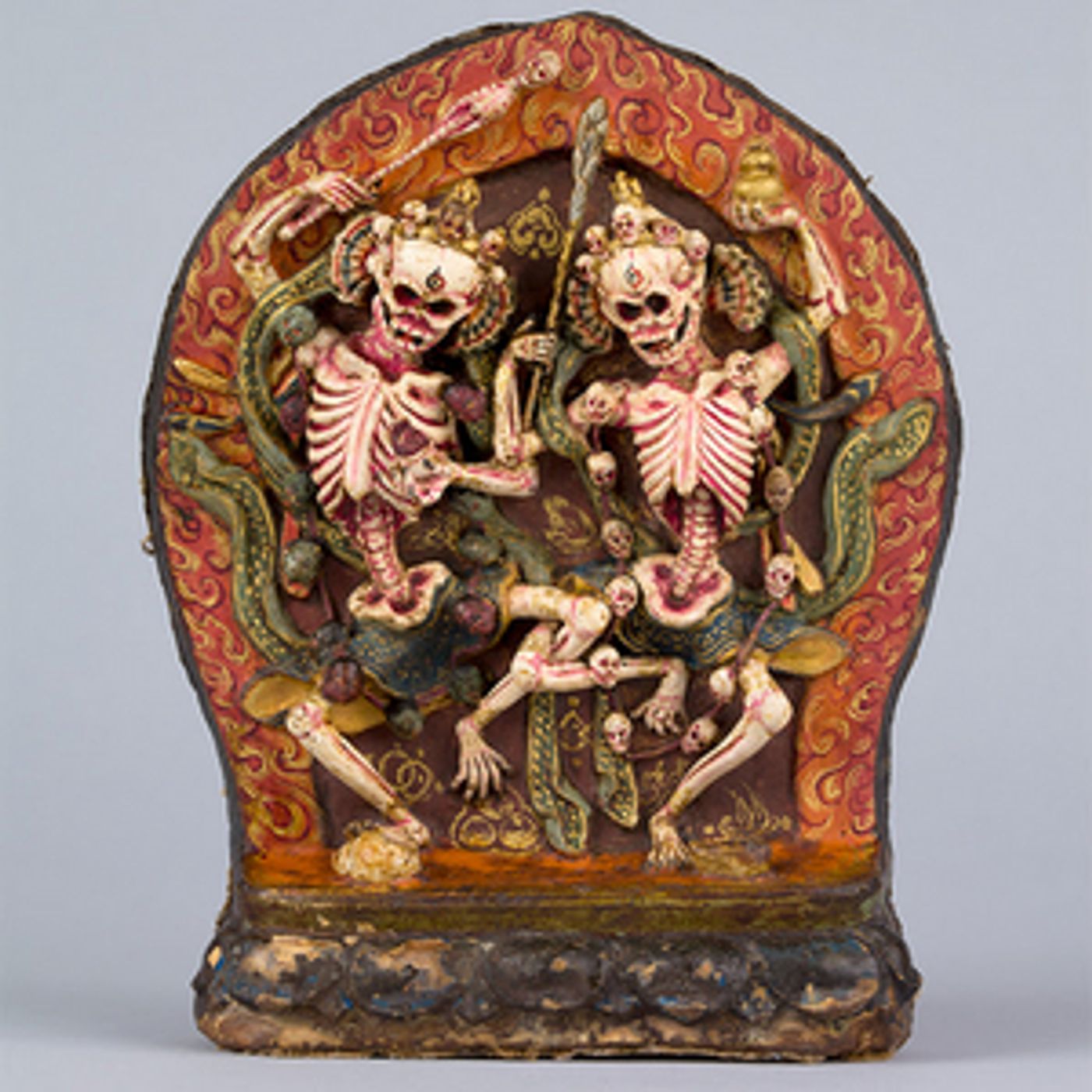DEATH IS NOT THE END Exhibition to Open at The Rubin Museum of Art

The Rubin Museum of Art will present "Death Is Not the End," a new exhibition opening September 18 that explores notions of death and the afterlife through the art of Tibetan Buddhism and Christianity. Featuring prints, oil paintings, bone ornaments, thangka paintings, sculptures, illuminated manuscripts, and ritual items, "Death Is Not the End" invites contemplation on the universal human condition of impermanence and the desire to continue to exist. This cross-cultural exhibition brings together over 30 objects spanning 12 centuries from the Rubin Museum's collection alongside artworks on loan from private collections and major institutions including the Metropolitan Museum of Art, Morgan Library and Museum, Museum aan de Stroom in Antwerp, Wellcome Collection in London, Nelson Atkins Museum in Kansas City, and more. "Death Is Not the End" is part of the Rubin Museum's yearlong thematic exploration of impermanence, a fundamental principle in Buddhist philosophy, and will be on view from September 18, 2020, to February 8, 2021.
Buddhist and Christian cultures share the certainty of our mortality in this world while also proposing an existence after this lifetime. Depending on the circumstances, there is a promise of a better place, or one of further purifying suffering to ensure the eventual attainment of a better existence. These views, in their most general sense, refute the permanence of death while accepting its inevitability. "Death Is Not the End" considers the ideas that balance this apparent contradiction. The exhibition will be organized around three major themes: The Human Condition, or the shared understanding of our mortality in this world; States In-Between, or the ideas of limbo, purgatory, and bardo; and (After)life, focusing on resurrection, ideas of transformation, and heaven. Each section will include areas where visitors can listen to select anonymous voices reflecting on death and the afterlife, inviting visitors to contemplate these ideas on a more personal level.Elena Pakhoutova is Curator of Himalayan Art at the Rubin Museum of Art with a PhD in Asian art history from the University of Virginia. Her background in Tibetan Buddhist studies contributes to her interdisciplinary approach to art history. Her research explores dialogues in the visual traditions of Inner Asia, art and ritual, art production and patronage, text and image, and narrative in Tibetan visual culture. Her other interests include cross-cultural exchange, material culture, and contemporary Tibetan art. At the Rubin Museum, she has curated several exhibitions, including "Collecting Paradise: Buddhist Art of Kashmir and Its Legacies," "Nepalese Seasons: Rain and Ritual," "The All-Knowing Buddha: A Secret Guide" (co-curated with Karl Debreczeny), "The Second Buddha: Master of Time," and most recently "The Power of Intention: Reinventing the (Prayer) Wheel".
Videos

